I put four rapid methods head-to-head with one simple rule: keep prep minimal, cut equal-sized florets, and include the stalk. The aim was flavour, colour and texture, all in minutes, without specialist kit or faff.
Four fast methods put to the test
Microwaving
I placed the florets in a microwave-safe bowl with four tablespoons of water and cooked on full power for three minutes. The florets softened and kept a gentle bite. The colour stayed decent. The flavour didn’t bloom.
Seasoning after the ping helped a little, but salt and pepper sat on the surface. The steam kept the veg moist, yet it diluted the taste. This works best when the broccoli will meet a bold sauce, such as a peanut dressing or a black bean glaze.
Fastest on the clock, mildest on flavour. Pair with a punchy sauce rather than serving solo.
Blanching
I boiled a pan of salted water, dropped the florets in for three minutes, then plunged them into iced water for three minutes. The ice bath locked in a vivid green. The stems stayed snappy. The taste washed out.
Blanching brings beauty and structure, but some flavour leaches into the water. It shines in cold salads where dressings add interest, or as a prep step before a quick finish in a hot pan.
Great colour and crunch, but the water steals flavour unless you finish the veg in a pan.
Pan-fried
I heated a little oil over medium heat, added the florets, seasoned well, and splashed in water to prevent scorching. Eight minutes delivered bronzed edges and a peppery aroma. The texture stayed firm, with an almost crunchy bite.
This approach suits anyone who enjoys al dente veg. It resists delicate aromatics at high heat, as fresh garlic can burn before the broccoli softens. Use sturdier flavours like chilli flakes or a finish of lemon zest.
Sauté after blanch (the winner)
I blanched the florets for three minutes, drained them well, then sautéed in a teaspoon of oil with salt and pepper for nine minutes. The edges caramelised. The centres relaxed. The seasoning stuck.
This hybrid kept the vibrant colour from blanching, while the pan delivered smoke-kissed notes and a satisfying chew. Aromatics behaved better because the veg needed less time in the hot pan.
Winner: 3-minute blanch + 9-minute sauté gives soft-crisp florets, browned edges and balanced flavour.
How the four methods compare at a glance
| Method | Total time | Texture | Flavour | Best for | Quick tip |
|---|---|---|---|---|---|
| Microwave | 3 minutes | Soft with slight bite | Mild, can taste watery | Busy nights, sauce-based dishes | Drain well, toss with thick sauce immediately |
| Blanch | 6 minutes (3 + 3) | Bright, crisp-tender | Clean, slightly diluted | Salads, meal prep, freezing | Salt the water; shock in ice to keep colour |
| Pan-fried | 8 minutes | Firm, al dente | Good browning, simple seasoning | Those who like crunch | Add a splash of water to soften without burning |
| Sauté after blanch | 12 minutes (3 + 9) | Soft-crisp, evenly cooked | Smoky, well seasoned | Side dishes, stir-fries, bowls | Dry well before the pan so the oil can caramelise |
Why the hybrid wins
Blanching pre-cooks the dense stems, so the pan can focus on caramelisation rather than softening. This reduces the risk of scorch. It also lowers the sulphurous notes that appear when broccoli sits too long in hot water. The quick sauté drives off surface moisture and encourages browning. The seasoning clings because steam no longer lifts it away.
You use less oil because the veg arrives nearly cooked. You get better control over tenderness with minute-by-minute checks. You also keep colour, which signals freshness on the plate.
A simple method you can repeat tonight
- Trim the dry end of the stalk, then cut florets the size of a large walnut. Slice the stalk into 1cm batons.
- Boil salted water. Cook the broccoli for three minutes. Drain and pat dry.
- Heat a teaspoon of oil in a wide pan. Add broccoli. Season with ½ teaspoon fine salt and a good grind of pepper.
- Sauté over medium-high heat for eight to nine minutes, stirring now and then, until edges brown.
- Finish with one of these: a squeeze of lemon, a teaspoon of soy sauce, or a knob of butter and a pinch of chilli flakes.
Dry the florets before sautéing. Wet surfaces steam instead of brown, which mutes flavour.
Make the stalk pay its way
The stalk delivers sweetness and fibre. Peel the outer layer if it feels tough. Slice thinly so it cooks at the same pace as the florets. Add the slices to the pan two minutes before the florets if they are thick. Save peelings for stock if you keep a freezer bag for trimmings.
Seasonings that work in minutes
- Garlic and lemon: add minced garlic for the final 60 seconds, then squeeze lemon over heat-off broccoli.
- Sesame and soy: stir in a teaspoon of soy and a few drops of toasted sesame oil right at the end.
- Anchovy and chilli: melt one anchovy fillet in the oil at the start, then finish with chilli flakes.
- Mustard and honey: whisk one teaspoon Dijon with one teaspoon honey; toss through the hot florets.
Time, cost and nutrition
All four methods deliver a side in under 15 minutes from the first chop. Microwaving uses the least energy per minute. Pan work uses little oil when you keep heat controlled. The hybrid adds a pot of boiling water, but the speed of the pan step offsets this with better flavour per minute.
An 80g serving counts as one of your five-a-day. Broccoli brings vitamin C, vitamin K, folate and fibre. A quick cook keeps more vitamin C than a long simmer. Keep water times short and use the pan to finish.
Useful extras for busy cooks
Batch blanch on Sunday, then chill. The florets will hold for three days in a sealed box with kitchen paper. You can then finish portions in a pan in nine minutes after work. Stir leftover sautéed broccoli into eggs for a next-day frittata. Fold it through pasta with olive oil and grated cheese for a fast lunch.
Mind a few risks. Overcrowding the pan traps steam and blocks browning, so use a wide skillet. Fresh garlic scorches if added too early, so add it near the end. Hot steam can burn, so lift lids away from you. Cut large florets smaller so stems and crowns cook evenly.
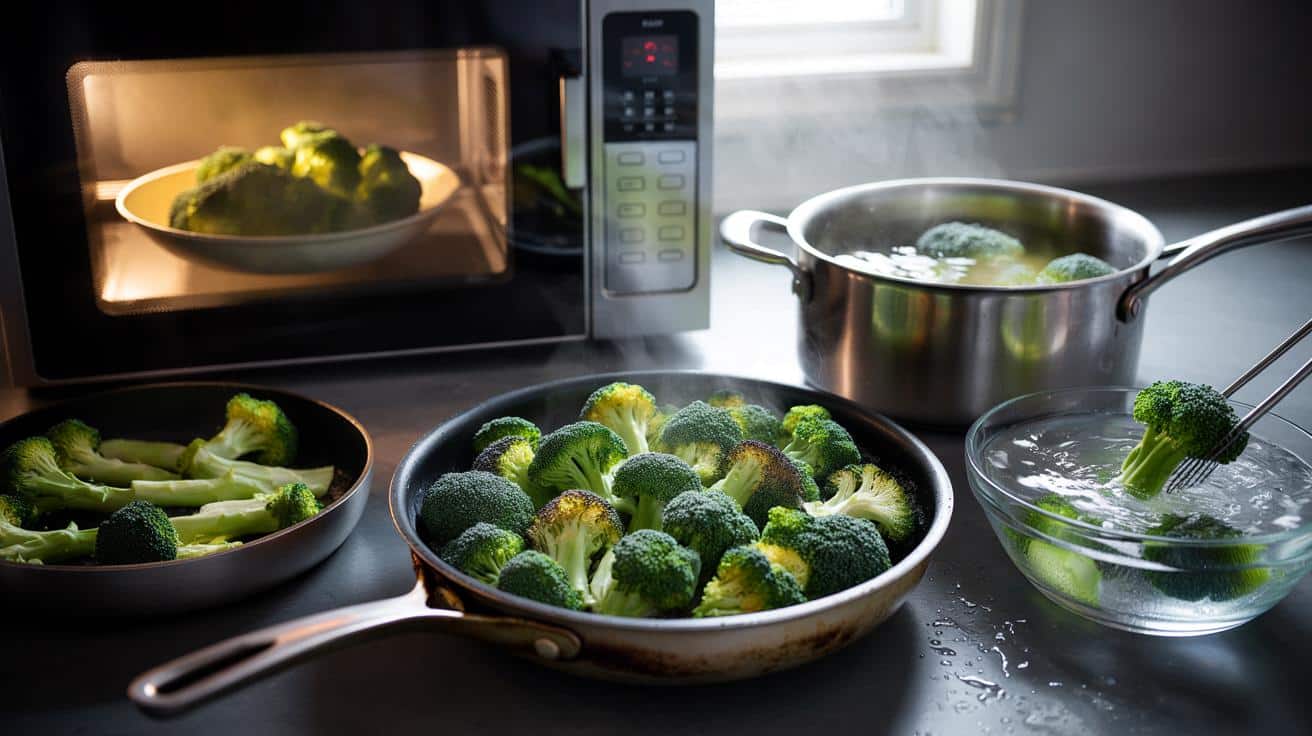


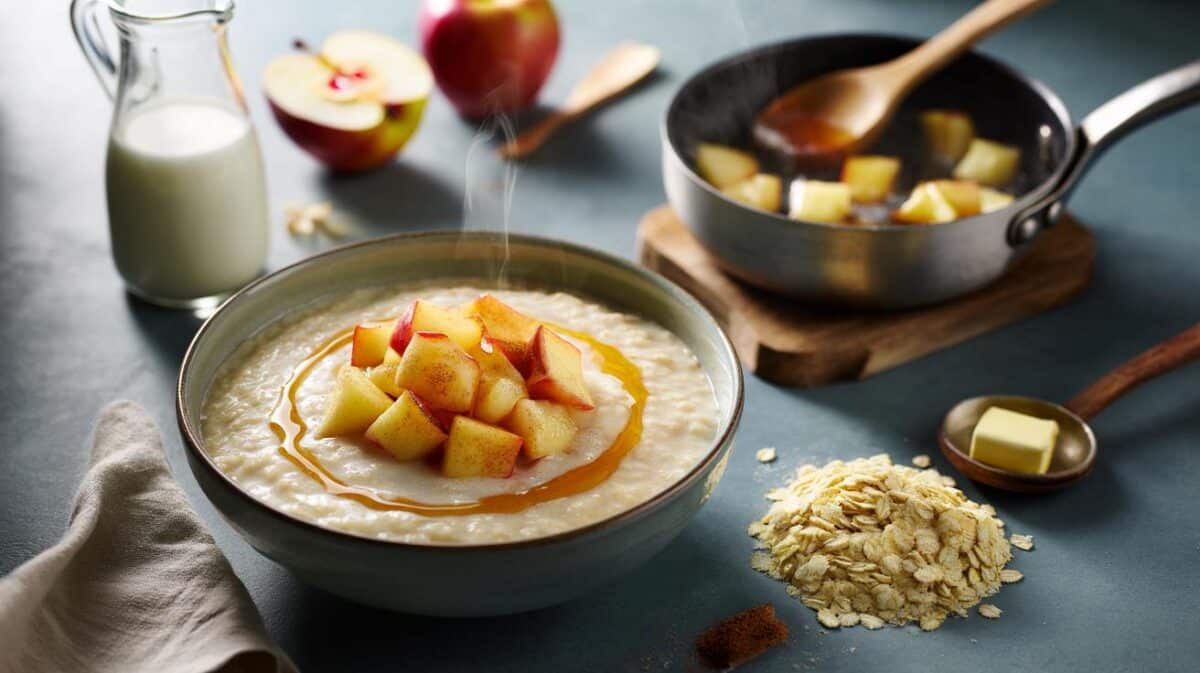

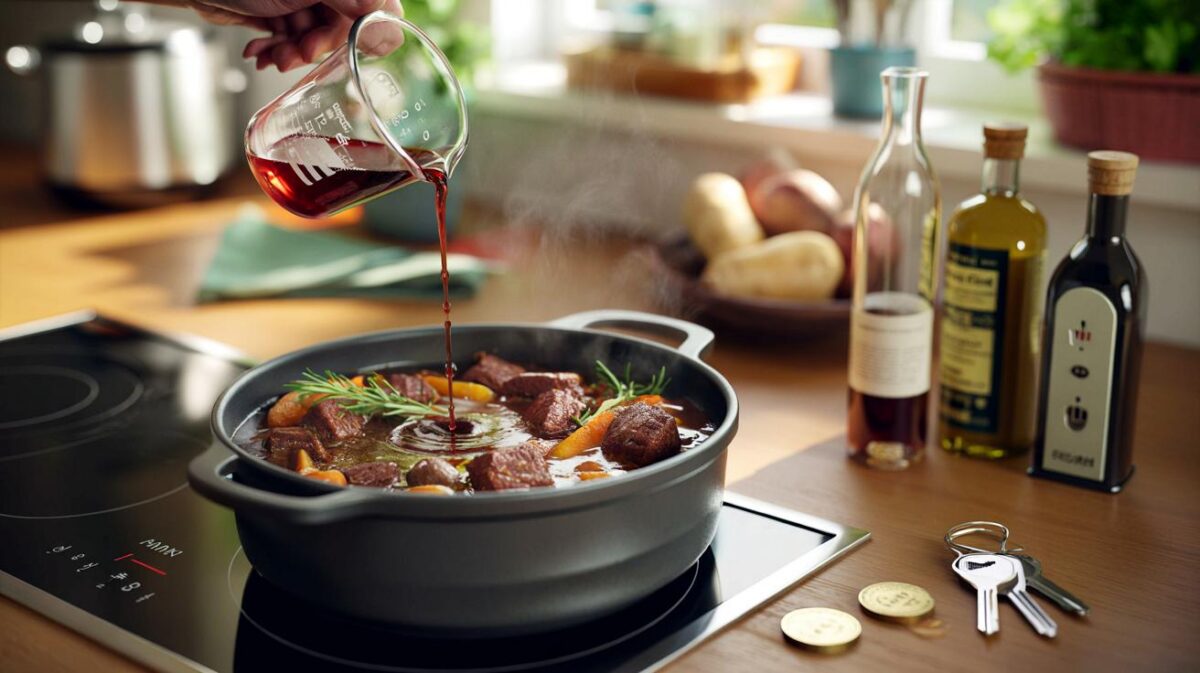

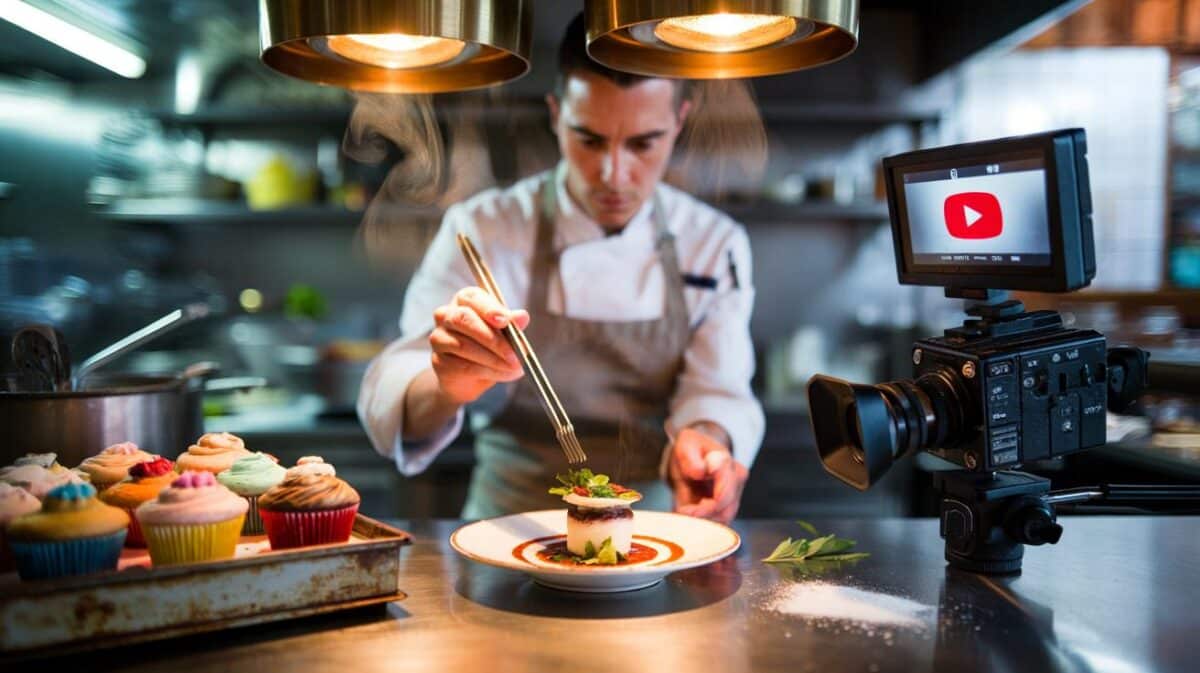
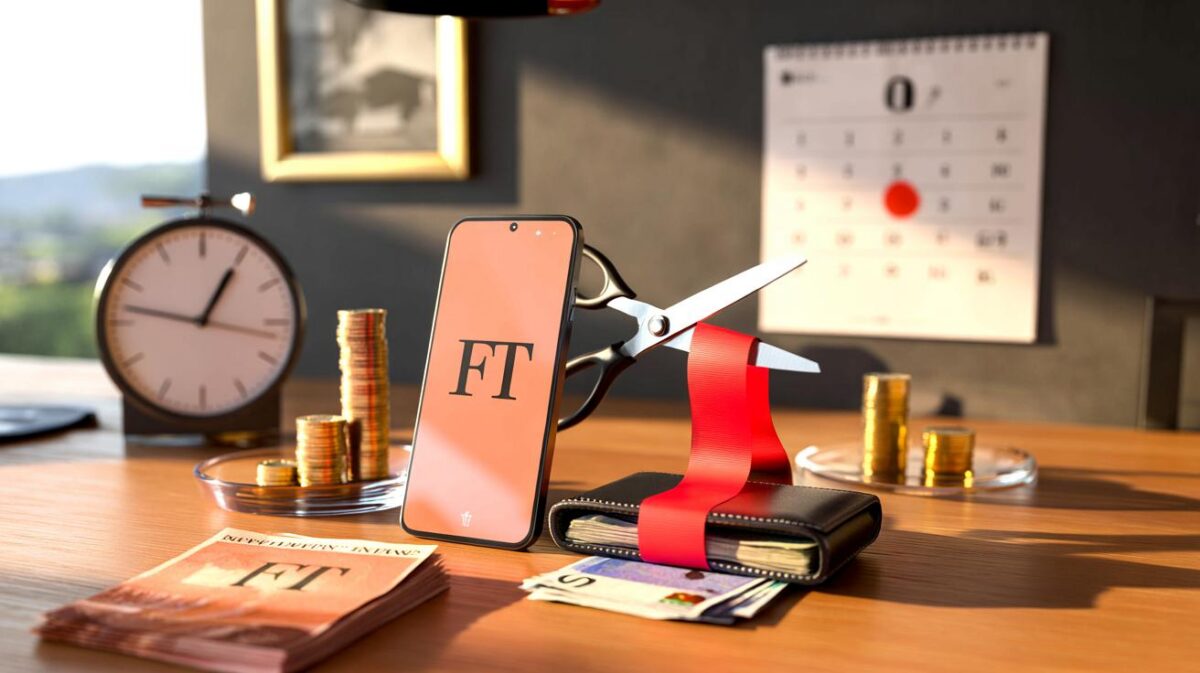
Loved the blanch-then-sauté breakdown—never knew drying the florets mattered so much. Tried it tonight and the edges actually browned instead of steaming. Quick Q: add soy + sesame on heat or off to avoid soggyness?